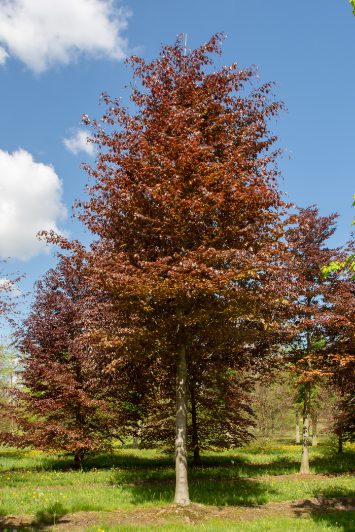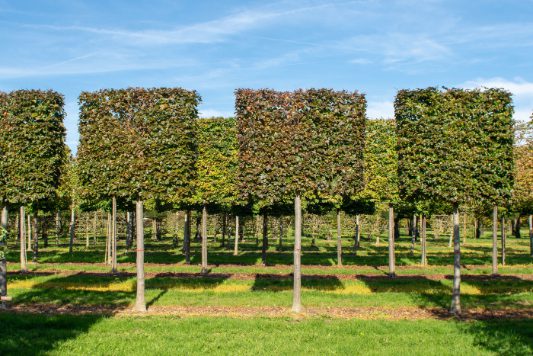Fagus sylvatica ‘Purpurea’ | Purple Beech
Fagus sylvatica 'Purpurea' is a cultivated form of Fagus sylvatica. This is a large, deciduous tree with a dense, rounded and spreading crown. Said to be one of the most imperial of our trees, this is a great specimen tree best planted as a solitary focal point, or as part of a large avenue. In spring the oval leaves, with silky brown hairs on the edges, begin life a deep purple-red colour. By summer they become coppery-green, sometimes hard to tell apart from the green Beech, and they finally turn a bronzy-brown in autumn. The leaf colour is very dependent on location and exposure to the sun, and the best purple colour is achieved in exposed areas with more light and sun. In shaded areas the foliage will appear more green in summer. Inconspicuous catkins appear April to May and once pollinated, the female flowers develop into reddish-brown beech nuts encased in spiny brown capsules, known as 'Beechmasts'. The Fagus sylvatica 'Purpurea' will thrive in any well-drained, fertile soil in full sun or part shade, but it is not suitable for exposed, coastal sites or wet poorly-drained areas. It is also an excellent tree for hedging and will often retain its brown crinkly leaves throughtout winter until new foliage bursts though.

Copper beeches appeared as natural mutants of the common beech in various parts of Europe, as early as the 15th century. The botanical name Fagus sylvatica' Atropurpurea' group covers a range of purple-leaved beech plants with purple to copper coloured leaves. The colour intensity can vary depending on seed, growing conditions and weather.






